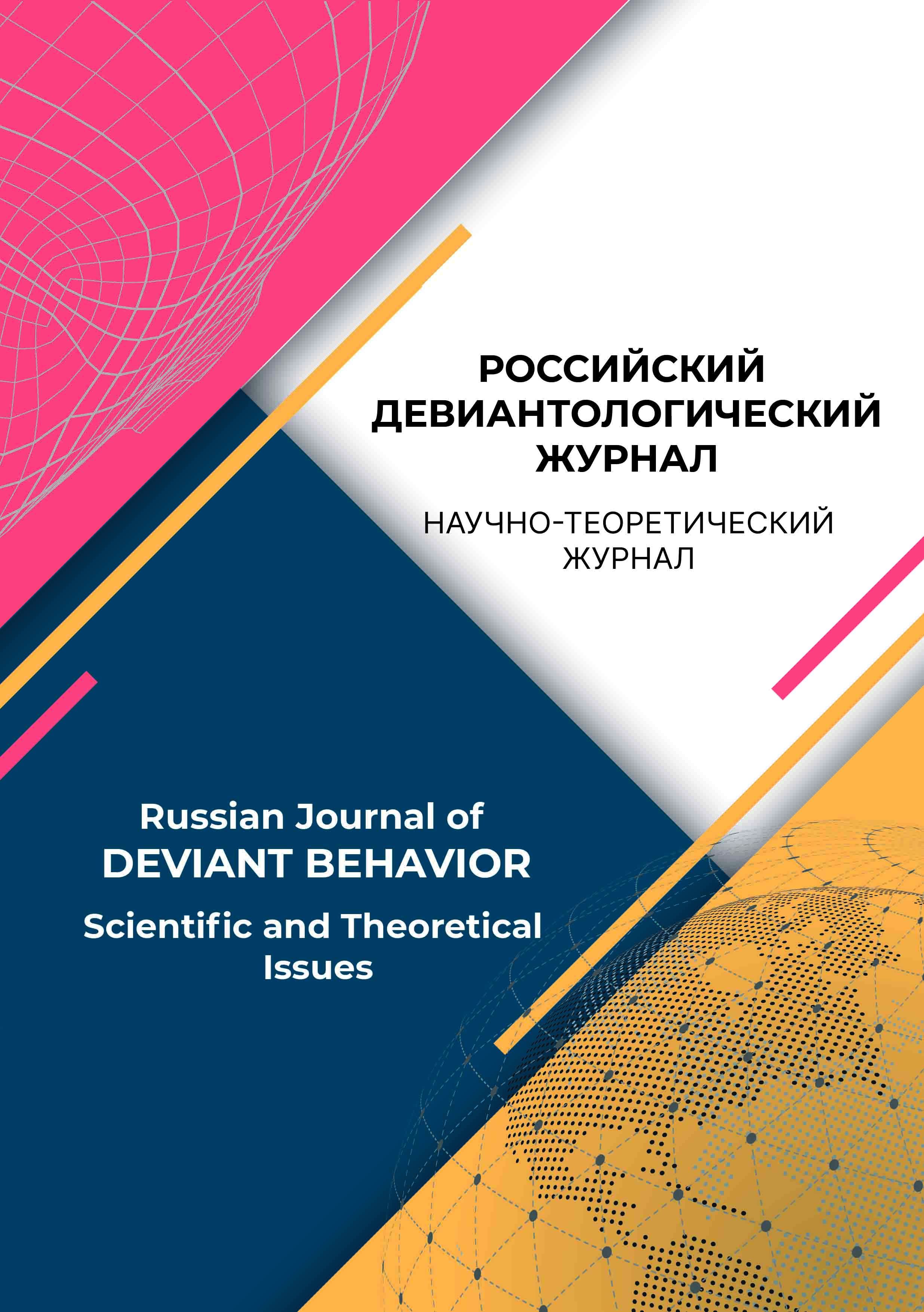Moscow, Russian Federation
Moscow, Russian Federation
UDC 159.9.072
Introduction. The article considers the tacticsissues of conducting special psychophysiological examination with application of polygraph during professional psychological selection of citizens entering the service in the internal affairs bodies of the Russian Federation.When using polygraph inpersonnel work, there are often situations when it is difficult for a polygraph examiner to make a decision about the significance of the reactions detected, as they may be associated not with the presence of a certain risk factor (deviant behavior) preventingthe subject’s entering the police service, but with the manifestation of situational anxiety, which is difficult for the candidate to control in the situation assessed as stressful. To solve this problem and increase the reliability of polygraph examinationsresults, the specialists use “attitude change”techniquethat makes it possible to draw objective conclusion about the significance of a particular “risk factor” for the subject, taking into account his or her individual psychological characteristics. Research Method. Psychophysiological method of lie detection (polygraph) allows to solve important issues of candidates selection for service in law enforcement agencies who do not have a tendency to deviant behavior, which further ensures the quality and efficiency of professional activities of police officers. Results. Within the framework of the conducted research the possibility of creating special attitude in the subject, providing the emergence of reaction to a stimulus previously not significant for him/her, related to some test subject, was shown. The effectiveness of the “attitude change” technique use, which helps to neutralize the “accusatory bias” of the polygraph test when working with subjects of the anxious and suspiciouscircle, was revealed. It is proved that “attitude change” technique use in the process of screening checks leads to the reduction of errors of the first kind (“false alarm”) and provides reliability of the results of psychophysiological examination with application of polygraph.
risk factors, deviant behavior, polygraph, reliability of polygraph tests, attitude change, psychology of service activities
1. Ajdinov, V. S., Belyh-Silaev, D. V. (2018). Taktika provedeniya psihofiziologicheskoj ekspertizy s primeneniem poligrafa v otnoshenii lic s akcentuaciyami haraktera. Yuridicheskaya psihologiya, 1, 23–29.
2. Alekseev, L. G., Zhirnov, S. I., Kalabin, A. Yu., Korolev, E. Yu., Lin'kov, S. V., Mitrofanov, V. V. (2020). Skrining personala dlya poligrafologa. Moskow: IPC «Maska».
3. Belyh-Silaev, D. V. (2016). Poligraf kak registrator neverbal'noj informacii v yuridicheski relevantnoj situacii (k voprosu o nauchnoj obosnovannosti psihofiziologicheskogo metoda detekcii lzhi). Yuridicheskaya psihologiya, 3, 28–35.
4. Bogaevskij, V. A., Pechenkova, E. A. (2026). Pravovoe regulirovanie special'nyh psihofiziologicheskih issledovanij s primeneniem poligrafa. Vestnik Moskovskogo universiteta MVD Rossii, 6, 187–189.
5. Varlamov, V. A. (1998). Detektor lzhi. Krasnodar: Sovetskaya Kuban'.
6. Vahnina, V. V. (2007). Osobennosti psihologicheskogo obespecheniya pri prinyatii kadrovyh reshenij v organah vnutrennih del s ispol'zovaniem poligrafnogo kompleksa. V Aktual'nye problemy special'nyh psihofiziologicheskih issledovanij i perspektivy ih ispol'zovaniya v bor'be s prestupnost'yu i podbore kadrov: materialy VIII mezhdunarodnoj nauchno-prakticheskoj konferencii. Krasnodar: Kubanskij gosudarstvennyj tekhnologicheskij universitet.
7. Gamza, V. A., Holodnyj, Yu. I. (2008). Nuzhen li banku «Detektor lzhi». V Poligraf v Rossii: 1993–2008 gg.: retrospektivnyj sbornik statej (str. 137–151). Moskow: Izd-vo MGTU im. N. E. Baumana.
8. Goryunova, L. N., Stepanova, N. A., Tret'yakov, V. P., CHiker, V. A. (2015). Psihologicheskie i so-cial'nye aspekty primeneniya poligrafa pri otbore kandidatov na gosudarstvennuyu sluzhbu. V A. A. Oboznov, A. L. Zhuravlev (red.), Aktual'nye problemy psihologii truda, inzhenernoj psihologii i ergonomiki: sbornik statej (trudy Instituta psihologii RAN, vypusk 7, str. 116–130). Moskow: Institut psihologii RAN.
9. Dashko, M. N., Vinogradov, M. V., Ul'yanina, O. A. (2018). Organizacionnye i pravovye aspekty provedeniya special'nogo psihofiziologicheskogo issledovaniya s primeneniem poligrafa s kan-didatami na sluzhbu v organy vnutrennih del. Psihopedagogika v pravoohranitel'nyh organah, 2 (73), 84–91. https://doi.org/10.24411/1999-6241-2018-12014
10. Karpova, S. Yu., Kuznecov, M. L. (2012). Special'nye psihofiziologicheskie issledovaniya s prime-neniem poligrafa (SPFI) v CPD pri provedenii professional'nogo psihologicheskogo otbora v organah vnutrennih del. V Podgotovka kadrov dlya silovyh struktur: sovremennye napravleni¬ya i obrazovatel'nye tekhnologii: materialy semnadcatoj vserossijskoj nauchno-metodicheskoj konferencii (Irkutsk, 01 marta 2012 goda, str. 331–337). Irkutsk: Vostochno-Sibirskij institut MVD Rossii.
11. Myagkih, N. I. (2004). Professional'nyj psihologicheskij otbor v organah vnutrennih del Rossijskoj Federacii: Koncepciya, principy, kriterii, tekhnologii: avtoref. dis. … kand. psihol. nauk. Saint Petersburg: Sankt-Peterburgskij universitet MVD Rossii.
12. Pelenicyn, A. B., Soshnikov, A. P. (2015). Sovremennye tekhnologii primeneniya poligrafa: podrob-noe rukovodstvo dlya poligrafologov-praktikov: v 4 ch., CH. 1. Moskow: Centr prikladnoj psihofiziologii.
13. Decicco, D. A. (2000). Police officer candidate assessment and selection. FBI Law Enforcement Bulletin, 69 (12).
14. Krapohl, D. J., Stern, B. A., & Bronkema, Ya. (2013). Numerical Evaluation and Wise Decisions. Polygraph, 32 (1), 57–69.
15. Dwyer, W. O., Prien, E. P., & Bernard, J. L. (1990). Psychological screening of law enforcement officers: A case for job relatedness. Journal of Police Science and Administration, 17 (3), 176–182.
16. Gordon, N. (2011). Meta-Analytic Survey of Criterion Accuracy of Validated Polygraph Techniques. Report prepared for the American Polygraph Association Board of Directors (2010-2011). Polygraph, 40 (4), 193–205.
17. Matte, J. A. (1996). Forensic Psychophysiology Using the Polygraph. New York: J.A.M. Publications.
18. Saxe, L., & Ben-Shakhar, G. (1999). Admissibility of polygraph tests: The application of scientific standards post-Daubert. Psychology, Public Policy, and Law, 5 (1), 203–223. https://doi.org/10.1037/1076-8971.5.1.203














